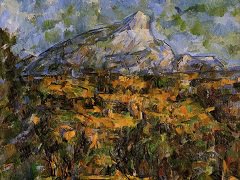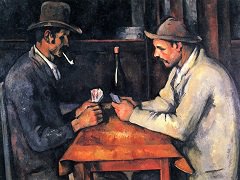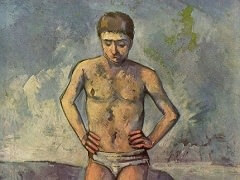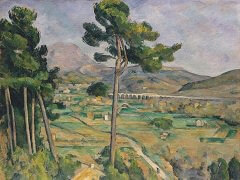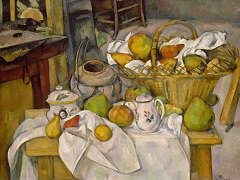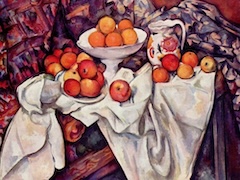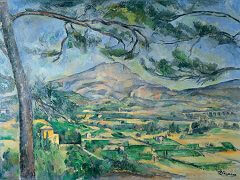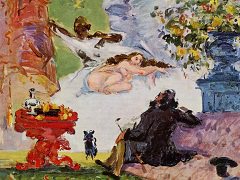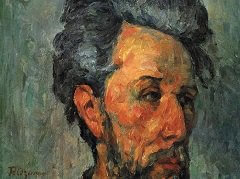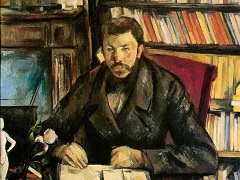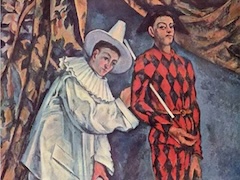Still Life with Basket of Apples, 1890-94 by Paul Cezanne
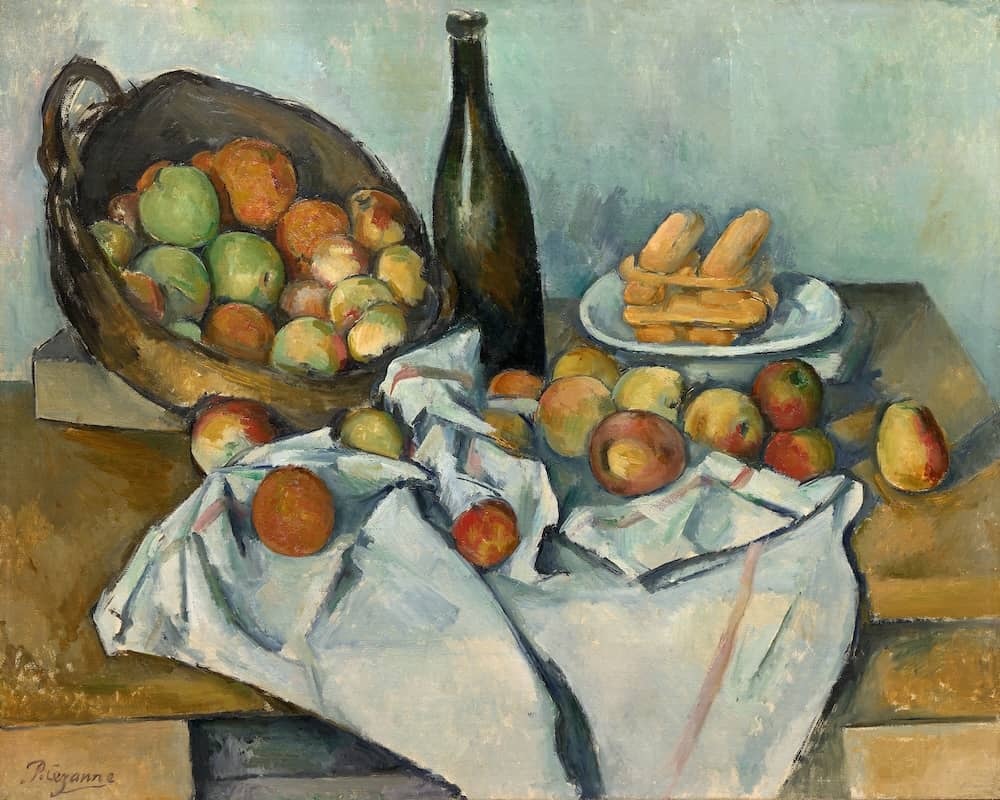
It is hard to imagine a circumstance of everyday life in which these objects would occur together in just this way. We are led to consider the whole as an arrangement by the artist, a pure invention. The basket rests on a block, the cookies on a platter set on a book, the apples on a richly folded cloth, and all these together lie on a table. This insistent superposition of things - very clear in the biscuits - is the clue to the artistic idea: the painting is a construction. The table too is treated as a kind of masonry with strongly banded forms. What makes all this more interesting is that so many of the elements are unarchitectural in feeling: the thirty or more apples, irreducibly complex in the sequence of colors, each fruit a singular piece of painting, a unique object; the tilted asymmetrical bottle and the basket; the hanging, rumpled tablecloth. This carefully considered still life, so exact and subtle in its decisions, retains an aspect of randomness, of accidental grouping. It is an order in which sets of elements of different degrees of order are harmonized; the apples in the basket - the apples on the tablecloth; the broken folds of the latter - the regular pattern of the biscuits. Balanced as a composition, the painting risks a great unbalance in the parts. It is not simply an equilibrium of large and small units, but of the the stable and the less stable. The odd tilting of the bottle must be understood in relation to other instabilities as part of a problem: to create a balanced whole in which some elements are themselves unbalanced. In older art this was done with figures in motion, or with a sloping ground, or hanging curtains and reclining objects. What is new in Cezanne is the unstable axis of a vertical object - a seated figure, a house, a bottle. Such deviations make the final equilibrium of the picture seem more evidently an achievement of the artist rather than an imitation of an already existing stability in nature. Here we cannot help but see together as balanced variations of a common unbalance the diagonals in different planes - the tilting of the bottle, the inclined basket, the foreshortened lines of the cookies, and, corresponding to these three tilted forms, the lines of the tablecloth converging to the lower edge.
The color is luminous, robust, and clear; tempered in the large objects, more intense in the small; and everywhere finely nuanced - the product of a visibly active brush. Although the bottle has the smoothness of glass, the other objects are fairly neutral in texture; assimilated to the qualities of the pigment and the stroke, they look solid but are not distinct substances - in the table this character goes with the astonishingly radical "abstract" treatment of its structure. The bottle too is submitted to this concreteness of paint and touch in the loosened, open rendering of its right edge.


